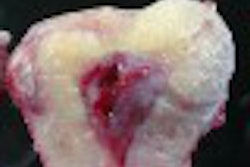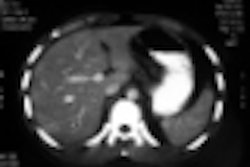CHICAGO - Ultrasound plays a crucial role in developing nations. Due to the low cost of ultrasound equipment and the minimal infrastructure required to operate it, ultrasound is often the only imaging modality available in countries where most high-tech imaging equipment would be prohibitively expensive.
At the same time, the modality depends on highly trained operators for its effectiveness, and a lack of training has been cited as a major impediment to the growth of ultrasound where it’s most desperately needed. The Jefferson Ultrasound Research and Education Institute of Thomas Jefferson University (JUREI) in Philadelphia was created to address this need.
Since its inception in 1992, the institute has become the hub of a global network of 40 ultrasound educational centers in 36 countries, training practitioners from around the world and coordinating the work of satellite offices in developing nations. The latest initiative, in the sub-Saharan nations of Africa, will begin in July 2002.
At Tuesday's ultrasound sessions of the RSNA meeting, institute director Dr. Barry Goldberg presented the results of a study evaluating the effectiveness of an intensive three-month ultrasound educational program called "Teaching the Teachers."
With the help of the U.S. government, the Source Foundation, the RSNA Research and Education Foundation and other entities, the program trains ultrasound practitioners from developing nations and teaches them to teach others. The study confirmed the value of the institute's training program.
"The key was quality control," Goldberg said. "How do we know whether they're learning or they're not learning? At [Thomas Jefferson University] medical school they developed an uncued test, and these tests were given pre- and post-program, as well as follow-up at approximately six months for a selected group of individuals."
The uncued test is a series of 500 ultrasound-related questions in five broad categories including physics, ob/gyn, abdomen, vascular and small parts. The questions are open-ended -- that is, not multiple choice -- but the test can be scored by computer.
"You can't go directly [to the answer]; you have to know it or not know it, so it’s much more difficult than a multiple-choice examination. It emphasizes recall and problem-solving, and it’s similar to real clinical situations," Goldberg said.
The test was administered immediately prior to the start of the training program, to 113 individuals from 22 countries. Translated exams were provided when language was a problem. One student dropped out, and the post-training test was given to 112 students three months later. In addition, 27 students completed a retest anywhere from several months to two years after training, after they had returned to their home countries.
The mean pre-training test score was 35% (SD=18.7), and the mean post-training score was 72% (SD=12.2). The mean follow-up score of 75% (SD=15.5) was even higher than the post-test, showing the kind of retention that comes from applying the knowledge in a clinical setting, Goldberg said.
"The [matched pairs t-test] analysis of the Teaching the Teachers program showed that the test scores increased an average 38% ... and the six-month follow-up showed no change, indicating a retention of knowledge," he said.
There was also a correlation between years of experience and success with the test, Goldberg said in response to questions from the audience. The mix of physicians was about 60% men and 40% women.
"What we found is that in many developing countries, the men had more advantages. They were in better institutions, they had better equipment available, and maybe more mentors.... And on average the women came in and had a lower test score. But guess what? When they were done with the three months of training, [the scores] were identical."
By Eric Barnes
AuntMinnie.com staff writer
November 28, 2001
For the rest of our coverage of the 2001 RSNA meeting, go to RADCast@RSNA 2001.
Copyright © 2001 AuntMinnie.com



















